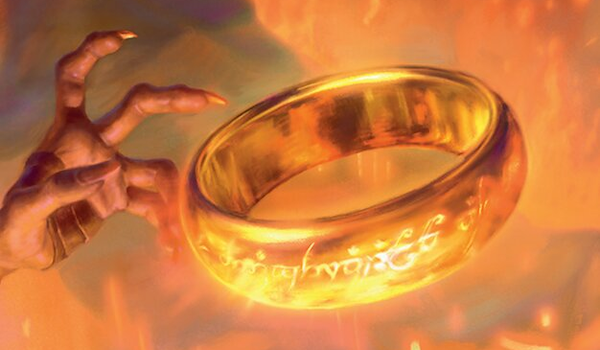Are you a Quiet Speculation member?
If not, now is a perfect time to join up! Our powerful tools, breaking-news analysis, and exclusive Discord channel will make sure you stay up to date and ahead of the curve.
As the year comes to its close, Modern is winding down. The end of RCQ season always means a reduction in paper data, but it's more severe this time. Everyone knows that there will be at least one banning on December 16th and there's decreasing enthusiasm for a lame duck format. I'd expect things to pick back up after New Years.
In the meantime, here's November's data to explain why players are so disenchanted.
The Unexpectedly Obvious Outlier
There's only one outlier in November's data set. It's Boros Energy. I feel like I don't need to specify that beyond professional obligation. While there was no doubt of this in the paper data, it did surprise me for Magic Online's data. Mardu Energy and Tameshi Belcher both looked like they'd be outliers, but the tests said no. The deviation in the data is almost certainly behind them being inside the data set.
As always, outliers are removed from the statistical analysis but are reported in their correct place on the Metagame Tiers. Despite the massive numbers it continues to put up, Boros Energy is not a Tier 0 deck. It doesn't have the Average Points to meet the definition.
November Population Metagame
To make the tier list, a given deck has to beat the overall average population for the month. The average is my estimate for how many results a given deck "should" produce in a given month. To be considered a tiered deck, it must perform better than "good enough". Every deck that posts at least the average number of results is "good enough" and makes the tier list.
Then we go one standard deviation (STdev) above average to set the limit of Tier 3 and the cutoff for Tier 2. This mathematically defines Tier 3 as those decks clustered near the average. Tier 2 goes from the cutoff to the next standard deviation. These are decks that perform well above average. Tier 1 consists of those decks at least two standard deviations above the mean result, encompassing the truly exceptional performing decks.
The MTGO data nearly exclusively comes from official Preliminary and Challenge results. Leagues are excluded, as they add analytically useless bulk data to both the population and power tiers. The paper data comes from any source I can find, with all reported events being counted.
While the MTGO events report predictable numbers, paper events can report anything from only the winner to all the results. In the latter case, if match results aren't included, I'll take as much of the Top 32 as possible. If match results are reported, I'll take winning record up to Top 32, and then any additional decks tied with 32nd place, as tiebreakers are a magic most foul and black.
The MTGO Population Data
October's adjusted average population for MTGO is 11.73. I always round down if the decimal is less than .20. Tier 3, therefore, begins with decks posting 12 results. The adjusted STdev was 24.69, so add 25 and that means Tier 3 runs to 37 results. Again, it's the starting point to the cutoff, then the next whole number for the next Tier. Therefore Tier 2 starts with 38 results and runs to 63. Subsequently, to make Tier 1, 64 decks are required.
The sample population rose thanks to November seeing the return of Showcase Qualifiers. They get points like the Preliminaries used to, and I hope one day will again. October's population was 1192 but November hit 1455 as a result. However, I feel like I have to asterisk that number. A lot of Challenges are firing with close to the minimum number now, which really reduces the legitimacy of the events per the old scoring system. I may have to reconsider how it all works if the upcoming bans don't change things.
The number of unique decks rose insignificantly to 90, causing the unique deck ratio to fall to 0.062, which is very bad both objectively and in terms of the yearly average. The number of tiered decks fell hard from 27 to 18. This is not a healthy Modern.

The Paper Population Data
We are entering the part of the year where paper data considerably falls, irrespective of format health. It's the holiday season. Stores schedule fewer big events, players have other things to do, and everyone's budget is a bit more strained. The lack of RCQ's certainly helps this time. January had 803 decks, February 890, March had 311, April hit 559, May fell to 389, June had 536, July rose to 589, August hit 758, September surged to 1155, and October fell to 997, and November continued the trend to 520 decks. Diversity has recovered slightly, with 77 unique decks and a ratio of 0.148. up from September's .097.
The population decrease means that only 21 decks made the tier list, down from 27. The adjusted average population is 5.72, so 6 results make the list. The adjusted STDev was 7.62, so the increment is 8. Therefore, Tier 3 runs from 6 to 14, Tier 2 is 15 to 23, and Tier 1 is 24 and over.

November Power Metagame
Tracking the metagame in terms of population is standard practice. But how do results actually factor in? Better decks should also have better results. In an effort to measure this, I use a power ranking system in addition to the prevalence list. By doing so, I measure the relative strengths of each deck within the metagame so that a deck that just squeaks into Top 32 isn't valued the same as one that Top 8's. This better reflects metagame potential.
For the MTGO data, points are awarded based on the population of the event. Preliminaries award points based on record (1 for 3 wins, 2 for 4 wins, 3 for 5), and Challenges are scored 3 points for the Top 8, 2 for Top 16, and 1 for Top 32. If I can find them, non-Wizards events will be awarded points the same as Challenges or Preliminaries depending on what the event in question reports/behaves like. Super Qualifiers and similar higher-level events get an extra point and so do other events if they’re over 200 players, with a fifth point for going over 400 players.
Due to paper reporting being inconsistent and frequently full of data gaps compared to MTGO, its points work differently. I award points based on the size of the tournament rather than placement. For events with no reported starting population or up to 32 players, one point is awarded to every deck. Events with 33 players up to 128 players get two points. From 129 players up to 512 players get three. Above 512 is four points, and five points is reserved for Modern Pro Tours. When paper reports more than the Top 8, which is rare, I take all the decks with a winning record or tied for Top 32, whichever is pertinent.
The MTGO Power Tiers
As with the population numbers, total points are up from 2106 to 2660. The adjusted average points were 21.69, therefore 22 points made Tier 3. The STDev was 47.24, so add 48 to the starting point, and Tier 3 runs to 70 points. Tier 2 starts with 71 points and runs to 119. Tier 1 requires at least 120 points. Nothing fell off this time, but Hardened Scales managed to sneak in on power.

Living End fell considerably between population and power. It remains quite popular but struggles to place highly. This may seem odd, as it you'd think that it'd have strong matchup against Boros Energy. This is not the case. With Boros maindecking and sideboarding Thraben Charm, game 1 isn't the slam dunk win you'd think. To make matters worse, Belcher has too many counterspells for Living End to reliably resolve, and so it struggles to race other combo decks.
The Paper Power Tiers
Paper's total points cratered 1673 to 850. The adjusted average points were 9.29, setting the cutoff at 10 points. The STDev was 12.71, thus add 13 to the starting point and Tier 3 runs to 23 points. Tier 2 starts with 24 points and runs to 37. Tier 1 requires at least 38 points. There was a lot of movement between the tiers and the bottom of Tier 3 completely rearraigned as several decks fell off and made it for a net-gain of one deck.

Composite Metagame
That's a lot of data, but what does it all mean? When Modern Nexus was first started, we had a statistical method to combine the MTGO and paper data, but the math of that system doesn't work without big paper events. I tried. Instead, I'm using an averaging system to combine the data. I take the MTGO results and average the tier, then separately average the paper results, then average the paper and MTGO results together for final tier placement.
This generates a lot of partial Tiers. That's not a bug, but a feature. The nuance separates the solidly Tiered decks from the more flexible ones and shows the true relative power differences between the decks. Every deck in the paper and MTGO results is on the table, and when they don't appear in a given category, they're marked N/A. This is treated as a 4 for averaging purposes.

I don't usually comment on the Composite Metagame, but since October the number of Tier 1.x decks have fallen off considerably. This is showing how strongly the metagame is coalescing around Energy and the anti-energy combo decks. The exception is Abhorrent Frogtide, but I think that deck is filling the same niche that Izzet Murktide did, where players are playing it because they like that gameplay style more than the deck is actually good.
Average Power Rankings
Finally, we come to the average power rankings. These are found by taking the total points earned and dividing them by total decks, to measure points per deck. I use this to measure strength vs. popularity. Measuring deck strength is hard. There is no Wins-Above-Replacement metric for Magic, and I'm not certain that one could be credibly devised. The game is too complex, and even then, power is very contextual.
Using the power rankings helps to show how justified a deck’s popularity is. However, more popular decks will still necessarily earn a lot of points. Therefore, the top tier doesn't move much between population and power and obscures whether its decks really earned their position.
This is where the averaging comes in. Decks that earn a lot of points because they get a lot of results will do worse than decks that win more events, indicating which deck actually performs better.
A higher average indicates lots of high finishes, whereas low averages result from mediocre performances and a high population. Lower-tier decks typically do very well here, likely due to their pilots being enthusiasts. Bear this in mind and be careful about reading too much into these results. However, as a general rule, decks that place above the baseline average are over-performing, and vice versa.
How far above or below that average a deck sits justifies its position on the power tiers. Decks well above baseline are undervalued, while decks well below baseline are very popular, but aren't necessarily good.
The Real Story
When considering the average points, the key is looking at how far off a deck is from the Baseline stat (the overall average of points/population). The closer a deck’s performance to the Baseline, the more likely it is to be performing close to its "true" potential.
A deck that is exactly average would therefore perform exactly as well as expected. The greater the deviation from the average, the more a deck under or over-performs. On the low end, a deck’s placing was mainly due to population rather than power, which suggests it’s overrated. A high-scoring deck is the opposite of this.
I'll begin with the averages for MTGO:
Broodscale Combo, in all its myriad forms, wins MTGO Deck of November. It feels like there are actually 5 different versions of the deck now, but they're so close that I can't be bothered to separate them out.
Now the paper averages:
Tameshi Belcher win Paper Deck of November, finally kicking Amulet Titan off the throne. Amulet's paper cohort are a dedicated bunch, but not enough that they can overcome the metagame pressure from Energy.
Analysis
I feel like all the analysis required is that Dreams of Steel and Oil is seeing maindeck play in Modern. Things have gone very far off the rail for that to happen. However, I should go through why this happened.
Boros Energy has taken most of the space for anything fair, though Mardu's higher removal count is letting it hang in there. It has the best threats, card advantage, and answers. As previously stated, I don't think the various Psychic Frog decks are as viable as their population numbers suggest. However, I know that people who like that type of deck really like it and would play it regardless of the metagame.
This leaves combo decks as the only means to fight Boros. Despite appearances, Energy isn't a very fast deck most of the time. It floods the board well, but unless Guide of Souls goes unanswered it can only do chip damage. It frequently wins after a long grindout, where it's advantaged, or in a combo-style win via Goblin Bombardment and/or Ajani, Nacatl Avenger.
Boros lacks ways to meaningfully disrupt combo beyond The One Ring ensuring they don't die right away. Mardu can fight with discard, but relying on a few discard spells has always been a weak plan. Combo decks are by their nature very fast and resilient. Thus, combo decks are thriving. Belcher is taking the lead since it can win in Boros' upkeep after a Ring turn and defends itself well.
Bans Are Coming
I cannot fathom December 16th being anything other than a bloodbath at this point. Players are vocally frustrated, event participation is down across the board, and interest is suffering. Wizards should have banned The Ring when they banned Grief. However, they wanted to see if it was salvageable. On paper, The Ring encourages the slower, grindier gameplay that Wizards likes. However, it's proven to be too ubiquitous and obnoxious for players to stand. Even before Energy coopted it. The Ring has to go.
Players will not be satisfied with only that, however. More must be sacrificed from Energy to appease them. Wizards printing an entire deck into Modern in a Horizons set is so offensive to many that they demand its death. Wizards is not going to kill the deck. They don't do that unless there is no other option. They're going to try and weaken it. If I had the choice, Ajani and Bombardment would go. The reach they provide is why control decks failed to contain the threat. Take them and The Ring away and Energy will just be a tiny creature deck and [card]Pyroclasm[card] will be the answer it always should have been.
What Happens Next?
Assuming that The Ring goes, and Energy is nerfed without being outright killed, the metagame is likely to severely convulse and will look completely different on the other side. I know that some fear that combo will take over, but it only got to the top of the metagame feeding on Energy. Once Energy is gone, they'll be pushed back.
For example, Burn isn't viable thanks to Energy's incidental lifegain, but it dominates Storm thanks to maindeck Eidolon of the Great Revel. If you really want to hurt Storm, Burn can also play a lot of white sideboard cards to lock them out. My favorite is Silence in response to Wish or Past in Flames. Belcher can't handle anything it can't counterspell and is very vulnerable to Ghost Quarter. Once Energy is gone, anti-combo decks will rise again.
The big change will be The Ring. It is in so many decks and so critical to each that it will fundamentally change Modern. Slower decks can't rely on it to singlehandedly bail them out of losing boardstates anymore. They have to play card advantage that's just card advantage again. That their viability will be affected is certain, how is impossible to say, especially as many faster decks also ran The Ring. There's going to be a fundamental reshuffle.
Financial Analysis
The Ring is already fallen from its peak price. It's not going to fully crater thanks to Commander and Legacy play, but it's being taken off buylists already as every expects it to be banned. I think we're nearing but aren't actually at the point where it's going to bottom out. If you didn't move your Rings in November, I think you missed the boat.
The next expensive card in Energy after Ring is Ocelot Pride. That card's price is holding steady, and I don't think that will change. Nobody seriously thinks that card is up for a ban. It has sufficient uses outside of Energy that it will still have strong demand even if the deck is killed, so it's a safe place to move towards.
Given how volatile the metagame is certain to be after December 16, I'd advise against speculative picks. I have no idea what's going to happen beyond chaos, so there's nothing to base my advice on. You'll be better off riding out December and seeing what 2025 brings ahead of the Modern RC's.





